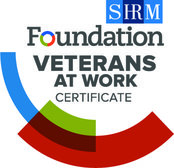For our readers who have SCA (Service Contract Act) contracts, please keep reading…there’s a whole other level of compliance we’ve gotta get smart on. For those of you who don’t have SCA contracts, thank your lucky stars, vow that you won’t go after this work without serious soul searching, and move on (Take this as our warning to you!).
Okay, everyone still with us? As you know, SCA compliance is tedious and painful. That’s our baseline. Let’s now talk compliance with ACA (Affordable Care Act). One thing to remember – ACA applies to all employers, not just those with 50+ employees.
First, SCA H&W dictates that a certain dollar amount, now $4.80 effective July 5, is the new bona fide health and welfare (H&W) rate for all covered contracts executed or bid on after the effective date.
This means:
• If a contract has a new option year, the new SCA H&W rate may be applicable.
• For any new work bid on, the updated SCA H&W rate must be included.
• For those contracts covered by the sick leave EO 13706, the new rate is $4.41/hour.
• Companies will want to contact their Contracting Officer for each SCA contract requesting the timing of the updated SCA H&W rates for the specific contracts
• Remember to ask whether a modification to the contract will be issued (yes!!) or if the SCA H&W rate will be updated at contract renewal/option year (boo!).
Secondly, in regulation with ACA, employers are required to offer minimal essential coverage with their benefit offerings, just like employers with non-SCA staff or pay a fee to the IRS.
• SCA H&W by design was implemented in order to require employers to provide benefits instead of cash in lieu (CIL).
• Technically, not offering benefits could be non-compliant with SCA.
• DOL has provided guidance saying that under ACA, employers will no longer be able to pay all cash (ARE YOU HEARING THIS CIL FOLKS?) in lieu of offering benefits.
Finally, with this information come certain risks under ACA and SCA. Some key elements to consider:
• Offering CIL payments in lieu of benefits does not meet the ACA requirement.
• Employees can potentially waive benefits to receive the CIL and still not have benefit coverage under another qualifying plan.
•Not having a waiver on file could make the employer non-compliant with the ACA mandate. So yes, insist on the documentation, regardless of what story the employee may tell you. No documentation = considered not otherwise covered in the eyes of the employer, IRS, and DOL.
• Not offering an ACA compliant plan that meets minimal essential value or minimal essential coverage could put the company at risk.
Along with these stormy clouds. We bring you some sunshine in the form of how to combat these risks:
• Offer benefits that are ACA compliant and follow SCA definition of a bona fide fringe benefit.
• Ensure each plan meets minimal essential value and minimal essential coverage.
• Work with brokers and other SCA/ACA experts on the outside if there isn’t someone at the company who understands the SCA H&W complexities.
• Be sure to obtain waivers (proof of insurance) from employees who waive benefits. Unfortunately, you just can’t take their word for it. If you’re audited and no documents on file means you’re paying fines.
If you’ve made it this far into reading about SCA H&W compliance, you deserve another cup of coffee (or something stronger depending on where you are in the process). BOOST can help with that too! BOOST LLC is sponsoring the September 25th govmates Institute that will focus on how you can CYA in SCA. (Breakfast and lunch with beer are included! We told you we had you covered.) Register for the govmates institute or contact BOOST for more information, info@boostllc.net.









